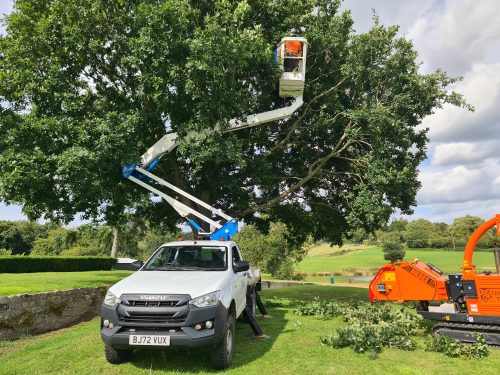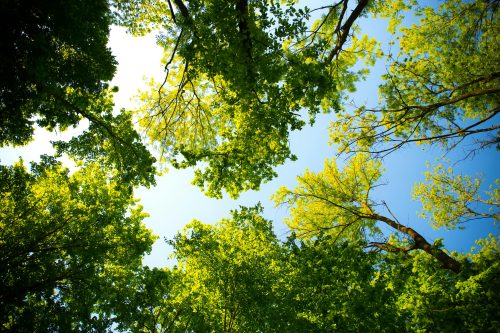 https://www.wilsontreesurgery.com/wp-content/uploads/2024/09/20230807_162313-500x375.jpg
https://www.wilsontreesurgery.com/wp-content/uploads/2024/09/20230807_162313-500x375.jpg
Machinery used in utility arboriculture
Read more
by Wilson Tree Surgery |
There are many myths and misconceptions about tree care that can lead to poor practices and result in damage. In this blog, we’ll debunk some common tree myths to help you make informed decisions about tree care and maintenance.
Debunked: Topping, which involves cutting off the upper portion of a tree’s main branches, is a harmful practice that can severely damage a tree’s health. While it might seem like a quick solution to reduce a tree’s size or prevent it from interfering with structures, topping can lead to serious problems. This practice removes a significant portion of the tree’s foliage, reducing its ability to produce energy through photosynthesis. The tree will often respond by rapidly producing weak, poorly attached branches, increasing the risk of breakage and decay.
Proper Practice: Instead of topping, consider crown reduction or selective pruning, which carefully reduces the tree’s size while maintaining its structural integrity and health. Always consult a certified arborist for the best pruning techniques.
Debunked: Unlike animals, trees do not heal in the traditional sense. When a tree is wounded, it does not regenerate tissue to close the wound but instead compartmentalises the damaged area with new growth. This process, known as “compartmentalization,” helps to limit the spread of decay and disease. However, it doesn’t eliminate the wound, which can still serve as an entry point for pests and pathogens.
Proper Practice: To help trees “compartmentalise” more effectively, proper pruning techniques should be used, ensuring that cuts are clean and made in the right places. Avoid leaving large stubs or making flush cuts, as these can hinder the tree’s natural defence mechanisms.
Debunked: Many tree issues are not immediately visible to the untrained eye. Problems such as root rot, internal decay, or insect infestations often start below the surface or inside the tree, making them difficult to detect without a thorough inspection. By the time visible symptoms appear, the damage may already be significant.
Proper Practice: Regular inspections by a certified arborist can help identify and address hidden issues before they become severe. Arborists use specialised tools and knowledge to assess tree health, ensuring that potential problems are caught early.
Debunked: While landscapers can provide valuable services for general garden maintenance, tree surgery requires specialised knowledge, skills, and equipment. Improper tree care can lead to tree damage, personal injury, or property damage. Professional arborists are trained to handle these tasks safely and effectively, ensuring the long-term health and safety of the trees.
Proper Practice: Always hire a certified arborist for tree surgery. They have the necessary training and qualifications to perform complex tree care tasks, such as pruning, tree removal, and disease management.
Debunked: It was once common practice to seal tree wounds with paint or sealant, but research has shown that this can actually do more harm than good. These substances can trap moisture and decay-causing organisms inside the wound, preventing the tree’s natural processes from working effectively.
Proper Practice: It’s best to leave tree wounds exposed to the air, which helps them dry out and allows the tree to naturally compartmentalise the damaged area. If a tree requires pruning, ensure cuts are made cleanly and properly to minimise the risk of infection.
Understanding the truths behind these common tree myths can help you care for your trees more effectively and safely. Always prioritise the health and well-being of your trees by consulting with certified professionals and staying informed about proper tree care practices. By debunking these myths, we hope to encourage responsible tree care and maintenance, ensuring that trees continue to thrive and enrich our environment.
 https://www.wilsontreesurgery.com/wp-content/uploads/2024/09/20230807_162313-500x375.jpg
https://www.wilsontreesurgery.com/wp-content/uploads/2024/09/20230807_162313-500x375.jpg
Read more
 https://www.wilsontreesurgery.com/wp-content/uploads/2024/09/AdobeStock_475873508-500x333.jpeg
https://www.wilsontreesurgery.com/wp-content/uploads/2024/09/AdobeStock_475873508-500x333.jpeg
Read more
 https://www.wilsontreesurgery.com/wp-content/uploads/2024/09/pexels-valiphotos-589802-500x333.jpg
https://www.wilsontreesurgery.com/wp-content/uploads/2024/09/pexels-valiphotos-589802-500x333.jpg
Read more